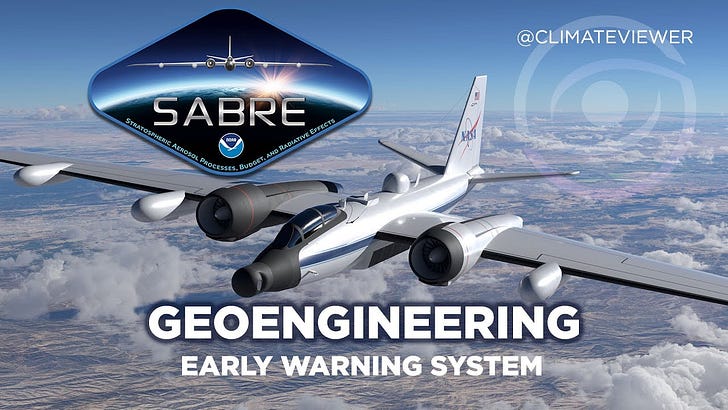Raining Aluminum & Space Junk
The Sources of Stratospheric Aluminum: A Closer Look at the Real Culprits
In recent years, the spotlight has turned to the stratosphere, with growing concerns about aluminum and its compounds accumulating in this critical layer of Earth’s atmosphere. Articles have pointed fingers at Starlink satellite reentries, claiming they contribute significant amounts of aluminum oxide as they burn up upon reentry. While it’s true that these satellites release aluminum oxide nanoparticles—estimated at about 66 pounds per satellite—the scale of this contribution pales in comparison to historical and ongoing sources that have been largely overlooked. Let’s unpack the numbers and put this debate into perspective.
Starlink Satellites: A Drop in the Bucket
Starlink, SpaceX’s ambitious satellite internet constellation, has garnered attention for its reentering satellites. Reports suggest that each satellite, as it incinerates in the atmosphere, produces roughly 66 pounds of aluminum oxide. With approximately 500 Starlink satellites having burned up so far, that totals about 33,000 pounds of aluminum oxide released into the stratosphere. This figure sounds alarming at first glance—until you consider the broader context. While 33,000 pounds is not trivial, it’s a minuscule fraction when compared to other human activities that have pumped far greater quantities of aluminum compounds into the atmosphere.
The Space Shuttle Era: A Heavyweight Contender
Take, for instance, the Space Shuttle program. Each shuttle launch produced a staggering 240 tons—or 480,000 pounds—of aluminum oxide, primarily from the solid rocket boosters that relied on ammonium perchlorate composite propellant, which contains aluminum powder. With 135 shuttle missions conducted between 1981 and 2011, the program contributed a jaw-dropping 64,800,000 pounds of aluminum oxide to the atmosphere. That’s nearly 2,000 times the total aluminum oxide attributed to Starlink reentries so far. Even accounting for the fact that these launches occurred over three decades, the sheer magnitude of this contribution dwarfs the impact of satellite reentries. The shuttle program’s legacy lingers, as these particles can remain suspended in the stratosphere for years, influencing atmospheric chemistry and potentially climate dynamics.
The Elephant in the Sky: Commercial Aviation
Yet, there’s an even larger source that rarely enters the conversation: commercial aviation. Globally, there are approximately 43 million commercial flights annually, many of which cruise at altitudes between 30,000 and 40,000 feet—well within the stratosphere, especially at higher latitudes where the boundary dips lower. Jet engines burn kerosene-based fuel, releasing a cocktail of pollutants, including metallic nanoparticles from engine wear and fuel additives. While aluminum oxide isn’t a direct combustion product of jet fuel, aircraft engines contain aluminum components that erode over time, and trace aluminum can be present in fuels and exhaust plumes. Studies suggest that aviation contributes vast quantities of ultrafine particles, including metals, to the upper atmosphere—far exceeding the outputs of both satellites and historical shuttle launches in sheer volume.
The global fleet’s contribution is difficult to pin down precisely without comprehensive, up-to-date data, but consider this: a single jet engine can emit billions of nanoparticles per second, and with tens of thousands of flights daily, the cumulative effect is staggering. Unlike the intermittent nature of shuttle launches or satellite reentries, commercial aviation is a relentless, ongoing source of stratospheric pollution. Yet, it’s rarely mentioned in discussions about aluminum or metallic nanoparticles in the stratosphere. Why? Perhaps because it’s an inconvenient truth—aviation is a cornerstone of modern life, and scrutinizing its environmental footprint at these altitudes is less palatable than pointing to high-profile space ventures.
Putting It All Together
So, where does stratospheric aluminum really come from? Starlink’s 33,000 pounds from 500 reentries is a tiny blip compared to the 64,800,000 pounds from the Space Shuttle program—a historical giant that set the stage for today’s concerns. But both are dwarfed by the continuous, global output of commercial aviation, which likely contributes orders of magnitude more metallic nanoparticles, including aluminum compounds, every year. The focus on satellites feels like a distraction when you consider that 43 million flights annually churn through the stratosphere, leaving behind a persistent haze of pollutants that we’ve barely begun to quantify.
This isn’t to dismiss the impact of satellite reentries—every source matters, and the growing number of satellites in orbit will only increase this contribution over time. But if we’re serious about understanding and mitigating stratospheric pollution, we need to widen the lens. The Space Shuttle era left a massive mark, and commercial aviation continues to dominate the skies. Blaming Starlink alone is like mopping the floor during a flood—it’s not wrong, but it misses the bigger picture. Until we address these larger, systemic sources, the stratosphere will remain a dumping ground for humanity’s high-flying ambitions.
Geoengineering Early Warning System - Quantifying Stratospheric Metals
Video References
Study finds metal from space junk polluting the upper atmosphere | CBC Radio
Presentation | Space Debris Demise in the Atmosphere, The case of Aluminum
Jim Lee on X: "Starlink is everywhere. Check out this insane animation." / X
Space Junk Is Polluting Earth's Stratosphere with Vaporized Metal | Scientific American
Don't Fear China's Falling Rocket--Fear the Future It Foretells | Scientific American
SCI - C&I Issue 1 2024 - Waste of space: the junk littering the ozone
The Latest Threat to the Ozone Layer: Elon's Starlink Satellite Megaconstellation
5G and Broadband from Space and Airplanes • ClimateViewer News
Reentries | The CORDS Reentry Database documents objects and payloads that have reentered earth’s atmosphere since 2000.
Aluminum, Barium, and Chemtrails Explained – JUST THE FACTS • ClimateViewer News
SRBSeparationSTS117 - Space Shuttle Solid Rocket Booster - Wikipedia
Connect With ClimateViewer

Attack Ideas, Not People
❤️ you, mean it.
Jim Lee



Thanks Jim! Total number of satellites in orbit around earth atm is estimated to be 9,900. You mentioned One Web but said that you don't know much about them. There are 630 satellites as part of its broadband internet constellation connected to 5G, 6G, and the IOT future. https://oneweb.net/our-network
An overview of the top ten satellite owners: https://keeptrack.space/deep-dive/who-owns-satellites/
We have pollution control devices for all sorts of engines. Why not planes?